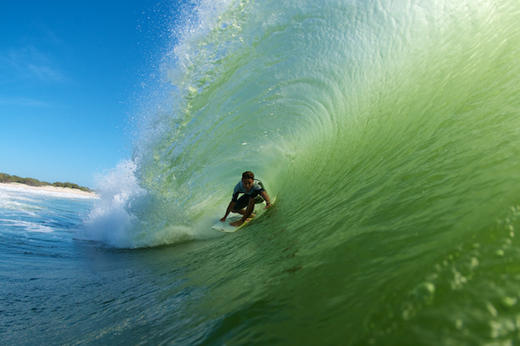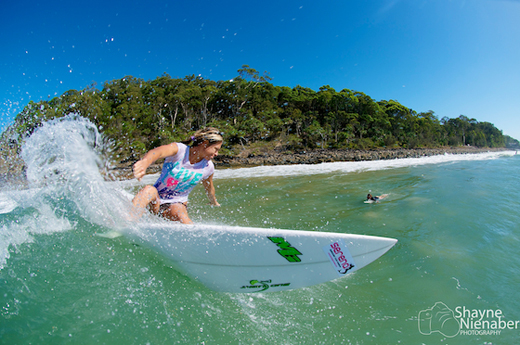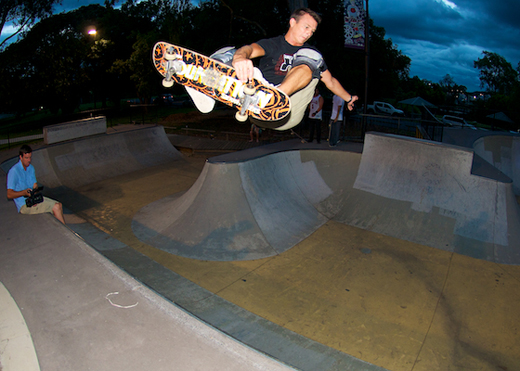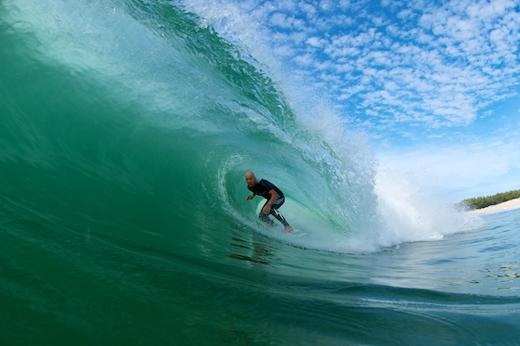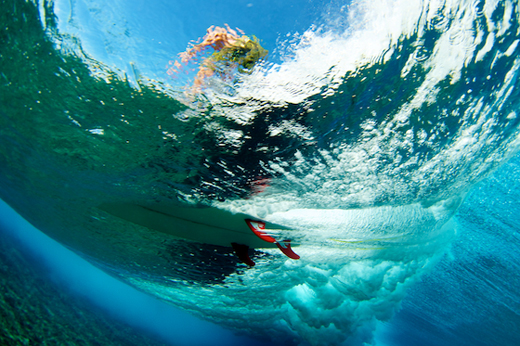Inside the Photography Business: Shayne Nienaber
PhotoMerchant: Tell me about yourself and your photography business.
Shayne Nienaber: I come from a family of surfers; we’ve lived our life at the beach. Three years ago on a surf trip, I picked up a camera and started shooting. I’d never been into photography before, but the shots I took turned out really well and I got hooked. When I came home I bought a camera and started practicing and improving my skills.
I booked into a photography course to learn the basics, and bought myself a water housing so I could shoot in the water to get a better perspective. A lot of other photographers were just shooting from land and their photos looked the same.
Initially I got photos published in surf magazines like Australian Surfing Life Magazine, Zigzag in South Africa and Gold Coast Surf. There are also a few websites ì Coastal Watch and Swellnet ì which run photos of the day. I sent them my photos, and as my work improved, it was published.
I then diversified to include portrait and commercial photography and realised that it had become more of a business than a hobby. I still have a day job as a service manager for a car magazine, and on the weekends I run Shayne Nienaber Photography, doing surf and portrait photography. I’m pretty busy!
PM: What’s the most important thing you’ve learned about running a business?
SN: I give a really excellent, reasonably-priced product to my customers, and I’m honest and trustworthy. If you don’t have those things in business, you’re going to suffer.
Pricing was hard to get the hang of at first. I always quote my prices up front, and if I make a mistake and underquote, that’s at my expense. I made my mistakes early on, which was good because of the learning experience. Thankfully I’ve got over that now!
My management role has helped me a lot with the business. I know how to set budgets and goals, and make five year plans.
PM: Why do you think your customers like working with you?
SN: I’m a very easy-going person. I love meeting new people. I’ve been told that I talk too much, but I think that’s one of my positive attributes!
PM: Is there anything you’ve changed about your business since you started?
SN: I’ve my changed business to focus on surf and portraits. When I first started out, I wanted to do many types of photography, including weddings, but I find I can be most creative with portrait and surf photography, and with portraits, I get to meet lots of people, which I love.
Portrait photography is more lucrative for me. You can make a lot more money with weddings per assignment, but it’s very competitive. I get a lot of work in portrait photography because my wife is a teacher so I can advertise in schools. My daughter is a dancer, and that’s allowed me to get involved in photographing dance clubs as well.
PM: How do you manage your workflows?
SN: Being a service manager has really helped me with time management. I make sure that I don’t let my work clutter up, and I keep on top of bills and invoices. I’m very hard on myself ì I make sure that things get done straight away. I’ve seen guys who let paperwork get out of control and it’s not good.
PM: What do you do to stay competitive with other photographers in your market?
SN: I never undercut anybody. If a potential customer asks me for a quote, I’ll give them my price, and if they say there’s another photographer who will give it to them cheaper, I’ll give them my portfolio. They can make a decision based on that.
Quality is going to stand above anything else ì that’s how I compete. I’d rather let my photos speak for themselves.
PM: How did you get clients when you first started out?
SN: Surf photography is very competitive and cutthroat. It’s about who you know in the surf industry. It’s very sad because there are a lot of good photographers out there and a lot of them don’t get any work processed.
I first submitted photos to surf websites where they run photos of the day; they have an incredible number of views every day. I asked other photographers who they were dealing with at the magazines. Once I started talking to the right contacts, I got exposure in the industry. After that I had sponsors contacting me to shoot their surfers.
Facebook has been a great way to drive traffic to my website. It’s instant, and people are on there all the time. I’ll put one or two photos as a teaser on my Facebook site and direct people to go to my website for the rest of the photos.
PM: If you could go back in time and give your younger self a piece of advice, what would it be?
SN: Trust your own instincts, even if you feel they’re not leading you quite right, because at the end of the day, if you learn from your own mistakes, you’re going to become a better photographer and a better person.
A lot of professional photographers have been around for a long time, and it’s easy for a new photographer to put them on a pedestal. But if you’re taking good shots and getting good reviews back, you must be doing something right. It’s great to look at other people’s work, but you need to develop your own style.
PM: Do you have any tips for new photographers?
SN: Be committed and patient if you’re going to be a serious photographer. Equipment is so expensive. If you’re going to get into photography, you want to be passionate about it. It’s not just a hobby that you can get bored with and throw away the camera later.
Also if you’re going to start a business only buy the equipment you need for that business. Don’t just buy a fish eye lens because it looks cool and then never use it.
PM: What do you think is going to happen in photography in five year’s time?
SN: Video to still photography is getting closer and closer. A lot of cameras have high definition video and it’s getting very good. You can take a still from the video. Maybe it’s going to put the still photographers out of the game.
I think video will take some of the creativeness and skill out of still photography. With stills, you have to get into position, get the exposure right, but when you’re shooting video you can just stand there and shoot.
PM: What do you do in your spare time?
SN: I try to surf when I can. I also try to read up on equipment. I do research at the library and online to keep up to date on technology and equipment. There’s always something new you can learn.
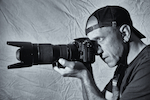 |
Shayne Nienaber runs Shayne Nienaber Photography, a Gold Coast-based surfing and portrait photography business. |

